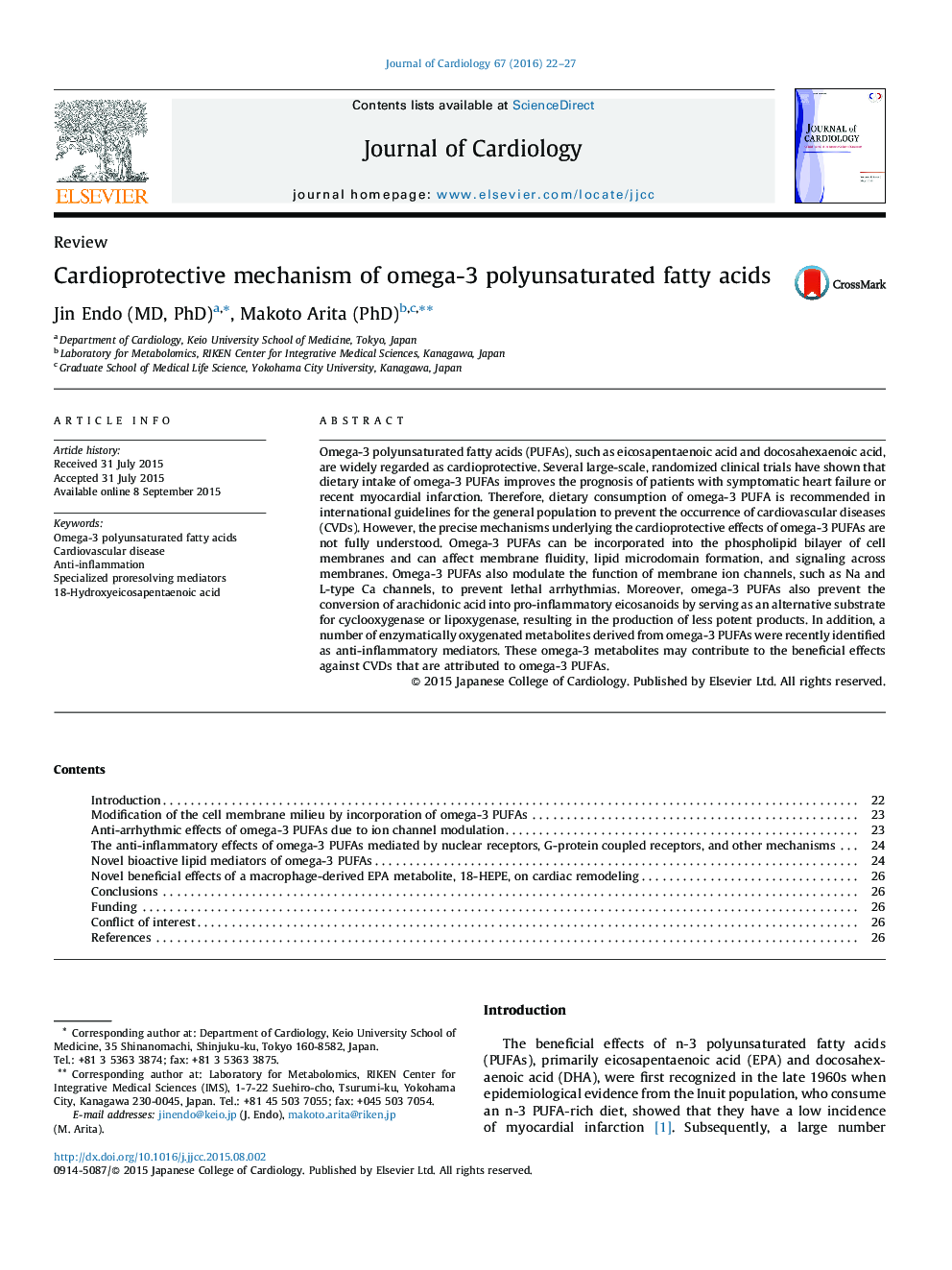| Article ID | Journal | Published Year | Pages | File Type |
|---|---|---|---|---|
| 2962898 | Journal of Cardiology | 2016 | 6 Pages |
Omega-3 polyunsaturated fatty acids (PUFAs), such as eicosapentaenoic acid and docosahexaenoic acid, are widely regarded as cardioprotective. Several large-scale, randomized clinical trials have shown that dietary intake of omega-3 PUFAs improves the prognosis of patients with symptomatic heart failure or recent myocardial infarction. Therefore, dietary consumption of omega-3 PUFA is recommended in international guidelines for the general population to prevent the occurrence of cardiovascular diseases (CVDs). However, the precise mechanisms underlying the cardioprotective effects of omega-3 PUFAs are not fully understood. Omega-3 PUFAs can be incorporated into the phospholipid bilayer of cell membranes and can affect membrane fluidity, lipid microdomain formation, and signaling across membranes. Omega-3 PUFAs also modulate the function of membrane ion channels, such as Na and L-type Ca channels, to prevent lethal arrhythmias. Moreover, omega-3 PUFAs also prevent the conversion of arachidonic acid into pro-inflammatory eicosanoids by serving as an alternative substrate for cyclooxygenase or lipoxygenase, resulting in the production of less potent products. In addition, a number of enzymatically oxygenated metabolites derived from omega-3 PUFAs were recently identified as anti-inflammatory mediators. These omega-3 metabolites may contribute to the beneficial effects against CVDs that are attributed to omega-3 PUFAs.
